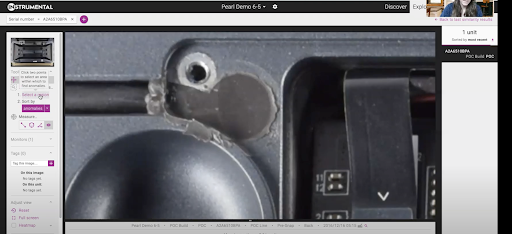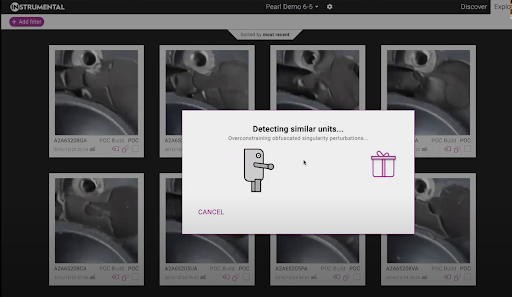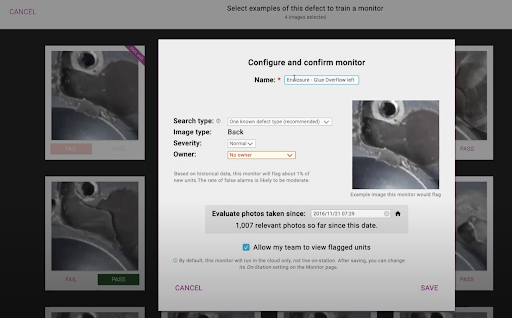In product development, glues and other adhesives represent the great solution to, and often source of, many manufacturing problems. Whether they are applied as bonding agents or as environmental seals, glues are heavily relied on by agile product teams working quickly to hit a build deadline – regardless of the numerous types of downstream issues they can cause when executed poorly.
As products get smaller and more complex, a seamless glue process is becoming more important to fewer quality issues and a smooth ramp. This is particularly true for products with complex 3D shapes, if die cuts are not an option, or if pull force is a priority.
Examples of common glue issues

In a recent 2020 study of over 3m units across development and mass production, Instrumental data found an aggregated defect rate of .73% for glue-related issues. This included start-stop anomalies, presence/absence, gaps and bubbles, shifted placement, overflow, underfill, and mix parameters. When extrapolated, this figure implies that during an average build with an output of 1,000 units per day, 7 units with glue issues would have either escaped or failed a functional test at the end of the line. But why is this figure so high and how can we fix it?
Glue issues often arise when applying structural glues, environmental seals, potting, conformal coating, and as underfill on PCBs. While common, these are incredibly difficult to detect in production. This is due to their amorphous nature: Glues start as an often translucent liquid before they harden, meaning their issues can be inconsistent and hard to detect with traditional visual inspection. Some glue issues might be caught by a reliability test or manual inspectors, but this can be inconsistent. Glue overflow can lead to tolerance stack issues (as shown above) and cosmetic squeeze-out. Insufficient glue can lead to vulnerable seals and reduced robustness. The resulting issues – whatever they may be – often make it into the field.
When you do realize there’s an issue, it’s hard to rework or do a failure analysis as current methods are destructive in nature. The traditional FA glue process, which can take weeks, includes inspecting the exterior of the products and heating or freezing the unit to weaken the adhesive to the point where you can pry the pieces apart and examine them. Because this teardown approach tends to negatively affect results, some people use CT Scans or X-Rays, but those can be expensive and lengthy.
If you’re not a seasoned product design engineer, you may be wondering if it’s worth it to use glue at all. But with Instrumental and some proactive design, you can easily optimize your glue application process and reduce delay-driving issues.
Catching glue issues with Instrumental
Instrumental’s AI is uniquely able to identify highly irregular or process-dependent failure modes, like presence/absence, breaks, bubbles, misplacement, overflow or underfill. Let’s walk through an example of failure analysis conducted using Instrumental’s AI and our virtual teardowns for Pearl Auto and their rear license plate camera.
If your FATP line notifies you that the rear cover is sitting proud in one corner and provides a serial number, you can filter for that serial number and see if the Instrumental AI can find an anomaly shared by the failed units.

Zooming in on the images shows an overflowing potting compound that is blocking the ledge where the rear cover needs to make contact.

To know how often this is happening, select a region, and the Instrumental app will search its images and highlight the most similar and least similar images are to that specific region.

Creating a monitor makes it possible to identify similarly compromised units and compare them to a functional unit.

Instrumental allows the monitor to be switched on, so that the production line station will intercept compromised units. This makes it easier for product teams to identify the root cause of issues and actively sort functional and compromised units in minutes. If your company is facing a challenge like this, and you have questions for our team about how Instrumental works and can help your company, please contact us or request a demo.
Related Topics


